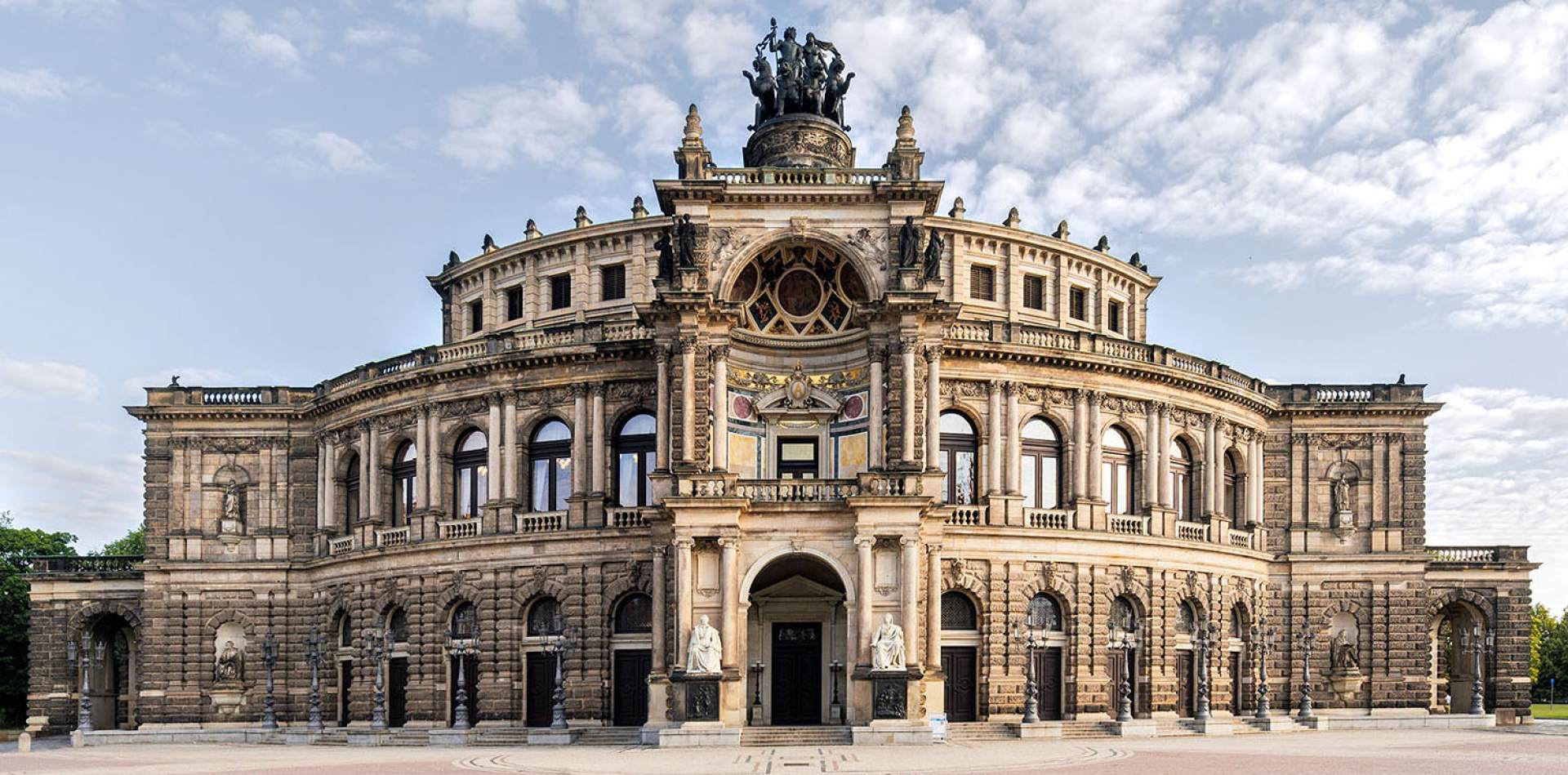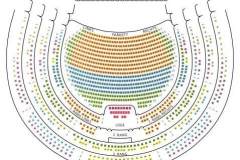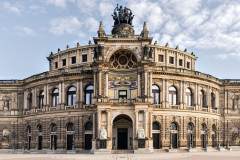The Love for Three Oranges
Mo | Tu | We | Th | Fr | Sa | Su |
The Love for Three Oranges - Sergei Prokofiev
Opera in four acts (ten scenes) and a prelude
Libretto by the composer after Wsewolod Meyerhold's adaptation of the play of the same name by Carlo Gozzi in the translation by Werner Hintze
Performed in German with German and English supertitles
Premiere: December 7, 2024
A satirical, grotesque and tragic adventure about the search for laughter.
Synopsis
Prologue
Advocates of Tragedy, Comedy, Lyric Drama, and Farce argue for their favourite form before the curtain goes up for a play. The Ridicules (Cranks) round them up and tell them they are to witness "The Love for Three Oranges".
Act 1
The King of Clubs and his adviser Pantalone lament the sickness of the Prince, brought on by an indulgence in tragic poetry. Doctors inform the King that his son's hypochondria can only be cured with laughter, so Pantalone summons the jester Truffaldino to arrange a grand entertainment, together with the (secretly inimical) prime minister, Leandro.
The magician Tchelio, who supports the King, and the witch Fata Morgana, who supports Leandro and Clarice (niece of the King, lover of Leandro), play cards to see who will be successful. Tchelio loses three times in succession to Fata Morgana, who brandishes the King of Spades, alias of Leandro.
Leandro and Clarice plot to kill the Prince so that Clarice can succeed to the throne. The supporters of Tragedy are delighted at this turn of events. The servant Smeraldina reveals that she is also in the service of Fata Morgana, who will support Leandro.
Act 2
All efforts to make the Prince laugh fail, despite the urgings of the supporters of Comedy, until Fata Morgana is knocked over by Truffaldino and falls down, revealing her underclothes—the Prince laughs, as do all the others except for Leandro and Clarice. Fata Morgana curses him: henceforth, he will be obsessed by a "love for three oranges". At once, the Prince and Truffaldino march off to seek them.
Act 3
Tchelio tells the Prince and Truffaldino where the three oranges are, but warns them that they must have water available when the oranges are opened. He also gives Truffaldino a magic ribbon with which to seduce the giant (female) Cook (a bass voice) who guards the oranges in the palace of the witch Creonte.
They are blown to the palace with the aid of winds created by the demon Farfarello, who has been summoned by Tchelio. Using the ribbon to distract the Cook, they grab the oranges and carry them into the surrounding desert.
While the Prince sleeps, Truffaldino opens two of the oranges. Fairy princesses emerge but quickly die of thirst. The Ridicules give the Prince water to save the third princess, Ninette. The Prince and Ninette fall in love. Several soldiers conveniently appear, and the Prince orders them to bury the two dead princesses. He leaves to seek clothing for Ninette so he can take her home to marry her, but, while he is gone, Fata Morgana transforms Ninette into a giant rat and substitutes Smeraldina in disguise.
Act 4
Everyone returns to the King's palace, where the Prince is now forced to prepare to marry Smeraldina. Tchelio and Fata Morgana meet, each accusing the other of cheating, but the Ridicules intervene and spirit the witch away, leaving the field clear for Tchelio. While Leandro and the Master of Ceremonies see that the palace is prepared for the wedding, Tchelio restores Ninette to her natural form. The plotters are sentenced to die but Fata Morgana helps them escape through a trapdoor, and the opera ends with everyone praising the Prince and his bride.
Program and cast
King Treff: Georg Zeppenfeld
Prince: Mauro Peter
Princess Clarisse: Nadezhda Karyazina
Leander: Neven Crnić
Truffaldino: Aaron Pegram
Pantalon: Danylo Matviienko
Wizard Tschelio: Alexandros Stavrakakis
Fata Morgana: Flurina Stucki
Linetta: Michal Doron
Nicoletta: Valerie Eickhoff
Ninetta: Jasmin Delfs
Cook: Taras Shtonda
Farfarello: Tilmann Rönnebeck
Smeraldina: Georgina Fürstenberg
Master of Ceremonies: Gerald Hupach
Musical Direction: Erik Nielsen
Production: Evgeny Titov
Set Design: Wolfgang Menardi
Costumes: Emma Ryott
Lighting: Fabio Antoci
Chorus: Jonathan Becker
Dramaturgy: Benedikt Stampfli
Saxon State Orchestra Dresden
Saxon State Opera Chorus Dresden
Semperoper Dresden
The Semperoper is the opera house of the Sächsische Staatsoper Dresden (Saxon State Opera) and the concert hall of the Sächsische Staatskapelle Dresden (Saxon State Orchestra). It is also home to the Semperoper ballet. The building is located near the Elbe River in the historic centre of Dresden, Germany.
The opera house was originally built by the architect Gottfried Semper in 1841. After a devastating fire in 1869, the opera house was rebuilt, partly again by Semper, and completed in 1878. The opera house has a long history of premieres, including major works by Richard Wagner and Richard Strauss.
The first opera house at the location of today's Semperoper was built by the architect Gottfried Semper. It opened on 13 April 1841 with an opera by Carl Maria von Weber. The building style itself is debated among many, as it has features that appear in three styles; Early Renaissance and Baroque, with Corinthian style pillars typical of Greek classical revival. Perhaps the most suitable label for this style would be eclecticism, where influences from many styles are used, a practice most common during this period. Nevertheless, the opera building, Semper's first, is regarded as one of the most beautiful European opera houses.

 EN
EN DE
DE IT
IT FR
FR ES
ES RU
RU JP
JP RO
RO
 Seating plan
Seating plan 